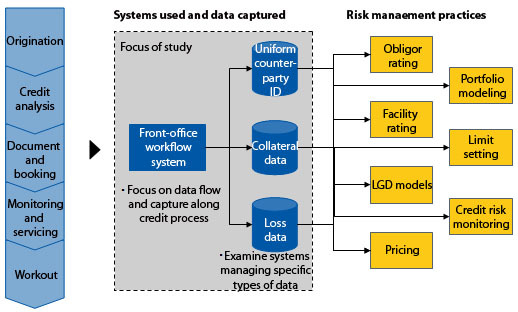Commercial Lending Credit Risk Management
Abstract
London, United Kingdom 8 January 2009
Commercial Lending Credit Risk Management: Surveying Business and Risk Technology Practices
As firms head into a tougher economic environment, commercial lending institutions will need to be more disciplined and streamlined in the way technology enables lending operations. Celent presents findings from a global commercial lending risk IT study and urges firms to adopt a value-based approach to optimize commercial credit technology practices.
Within an environment of heightened economic uncertainty, lending practices at most banks have changed. As we face a more perilous risk environment, firms are adopting conventional ‘defensive’ measures such as tightening lending standards, scrutinizing approvals more closely, and mobilizing workout departments’ ability to manage deteriorating credit conditions.

However, in meager times, as firms tighten their belts, the challenge often lies in discerning incremental improvements to hone and guide critical capabilities through adverse economic conditions – for instance, around collateralization, firm-wide credit exposure reporting / monitoring, ‘balanced’ early warning mechanisms, and workout effectiveness – such that the efficacy of these capabilities are high. In this global study of commercial lending institutions, Celent presents the technology levers, best practice considerations, and success factors underpinning these capabilities, such as managing universal counterparty identifiers (UCI), collateral and loss data, both from processes and IT perspective.
"Despite jarring markets, noisy headlines, and a fall in lending volumes, the impetus and mid-to-long term goal should not necessarily be to scale back lending activities, but to re-examine and realign risky ventures within the portfolio," says Cubillas Ding, Celent senior analyst and author of the report.
In every downturn scenario and through adverse market conditions there will still emerge winners and losers – characterized by the ability to execute on conventional defensive measures, strengthen the appropriate credit risk IT levers, and achieve a level of 'connectedness' in credit risk data in order to be able to draw out actionable information and dynamically respond to changing economic conditions. Celent’s findings suggest that, today, investment has not been optimised for these areas and a selective, dynamic approach could rapidly yield significant performance opportunities.
"In lean times, forward-thinking firms recognize the imperative to align critical capabilities with a value-based approach to optimize commercial credit technology practices, and to skew investment in credit risk technology to match this realignment," Ding adds.
As financial institutions engage in strategies to remain profitable during a recessionary and credit constrained environment, rather than preserving the status quo or pursuing indiscriminate cost rationalizations, firms should intelligently examine opportunities to weed out inefficiencies and ensure smart deployment of technology capabilities to achieve the right mix of tactical and strategic outcomes. These will delineate and propel leading institutions that possess the capabilities to take advantage of opportunities in a more volatile environment, from firms that are merely on the defensive.
Based on global surveys of more than 20 commercial lending institutions in North America, Europe and Asia, this report highlights ongoing risk IT pain points faced by firms, the spectrum of industry practices and geographical nuances, as well as delivering insights into best practice approaches and considerations for investing in, and building out risk technology management capabilities.
The 46-page report contains 17 figures and five tables. A table of contents is available online.
Members of Celent's Finance & Risk research service can download the report electronically by clicking on the icon to the left. Non-members should contact info@celent.com for more information.

